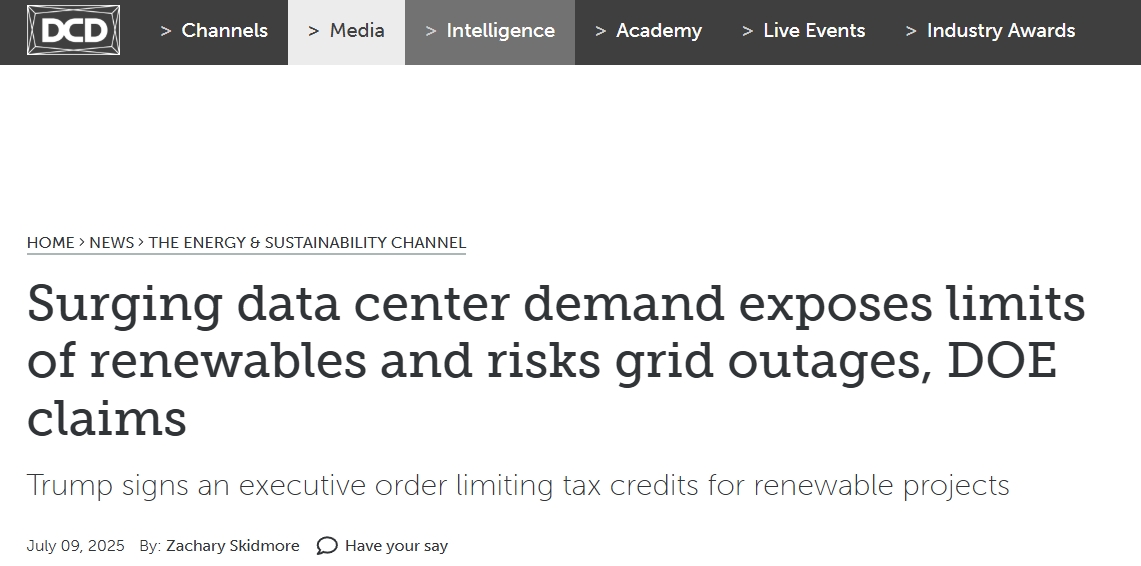Trump signs an executive order limiting tax credits for renewable projects
The Department of Energy (DOE) has released a new report warning that if retirement schedules and incremental additions of power generation assets remain unchanged, the US power grid will be unable to meet the projected demand from AI, data centers, and other large loads.
The Report on Evaluating US Grid Reliability and Security revealed that retirements plus load growth would increase the risk of power outages by 100 times by 2030.
The report took particular umbrage with the apparent disparity between the amount of renewable power sources, such as wind and solar, scheduled for connection compared to the amount of baseload sources like natural gas. According to the report, only 22GW of a total of 210GW scheduled to come online by 2030 comes from these “baseload” sources.
The remaining capacity is made up of traditional renewable and battery projects, with 31GW tied to lithium-ion battery energy storage projects, 124GW new solar, and 32GW new wind projects.
Despite representing significant amounts of load growth, DOE officials said that it was the “wrong type of generation needed to address the reliability issue.”
The report also found that the perceived risk of outages would not be significantly alleviated by reversing the closure of aging power plants. It contended that if there were no retirements over the next five years, outage risks in several regions would still rise by more than thirty times current levels.
A major factor in this risk is down to the huge projected increases in peak energy demand attributed mainly to the data center sector. According to the DOE, demand could rise by at least 100GW by 2030, with 50 percent attributed to the data center market. This is supported by independent studies, with a recent report by Grid Strategies projecting that US electricity demand could surge by 128GW within the next five years, with as much as 90GW attributed to the data center sector.
As a result, the report calls for urgent deployment of more baseload energy generation, from sources such as coal, oil, natural gas, and nuclear. The Trump administration, under the mantra of “drill baby drill,” has already made several moves to prioritize the development of fossil fuel generation to meet expected demand.
One of the President's first acts was to declare a “national energy emergency,” promoting oil and gas development and the streamlining of new fossil fuel projects. Since his inauguration, President Trump has signed executive orders to remove barriers to new coal power developments and to expedite the process of nuclear reactor approvals.
In addition, in June, the Federal Energy Regulatory Commission passed several measures to streamline the construction of natural gas infrastructure across the US. The majority of these decisions were undertaken under the guise of meeting demand from large load users, primarily the data center sector.
While fossil fuels and nuclear power have received vocal support from the Trump administration, renewables are increasingly being sidelined or actively curtailed. As part of the recently passed “One Big Beautiful Bill,” many of the tax credits provided as part of the Biden-era Inflation Reduction Act were rolled back.
The impacts of the bill on the renewable sector were worsened following a recent executive order issued by the White House. The order would block a provision within the bill that would have allowed solar and wind developers to qualify for full tax credits if they began construction within the next year. It would also crack down on rules providing developers “safe harbor” if they spent five percent of a project's cost.
The implications on the renewable market could be significant, threatening large numbers of projects that have already been approved for a grid connection.








